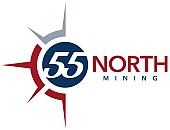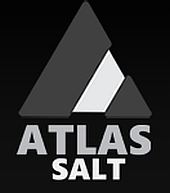 Constantine met tests recover up to 93% Zn at Palmer
Constantine met tests recover up to 93% Zn at Palmer
2018-08-13 11:45 ET – News Release
Mr. Garfield MacVeigh reports
CONSTANTINE METALLURGY PROGRAM YIELDS QUALITY BARITE CONCENTRATE AND RECOVERIES OF 93% FOR ZINC AND 89% FOR COPPER
Constantine Metal Resources Ltd. has released metallurgical test results that demonstrate a premium-quality barite concentrate can be produced as a co-product at the Palmer copper-zinc-gold-silver project in southeast Alaska. The testwork was designed to quantify the recovery of barite, a mineral that is abundant within the high-grade copper-zinc resource at Palmer that would otherwise become waste generated in the production of copper and zinc concentrates.
Results are also reported for copper-zinc flotation work and grindability tests that confirm and enhance the attractive mineral processing characteristics produced by previous metallurgical testwork. This includes a significant improvement in zinc recoveries to 93.1% to a concentrate grading 61.3% zinc, and high recoveries for copper, silver and gold.
Highlights of Barite Test Results:
- Barite recovery of 91.1% to a clean, high-grade barite concentrate with a high Specific Gravity (SG) of 4.44;
- Produced barite concentrate meets all specifications for oilfield drilling grade barite, including specific gravity, particle size, and purity, and appears to be a market-ready product;
- Simple flowsheet with barite recovered by flotation from the tails of copper and zinc flotation.
Highlights of Copper-Zinc Test Results:
- Very high zinc recovery of 93.1% to a concentrate grading 61.3% zinc; an improvement in recovery of 8.2% and an increase in zinc concentrate grade over previous locked cycle tests;
- High copper recoveries of 88.9% to a concentrate grading 24.5% copper; reproducing similar results to previous locked cycle tests;
- Combined total silver and gold recovery to copper and zinc concentrates of 90.6% and 69.6% respectively, the large majority of which reports to the copper concentrate;
- Grindability tests indicate a low Bond Work Index of 6.3 kWh/tonne, which is considered very soft, and therefore will have low grinding cost and power consumption.
Garfield MacVeigh, President and CEO states, “These results confirm that a premium-quality barite concentrate can be produced from the copper-zinc ores at Palmer, and that it can be achieved by the addition of simple steps to mineral processing. This may have very positive implications with the potential to both enrich gross metal value per tonne and provide significant environmental and operational benefits by reducing waste. The 93% zinc recovery with 61% zinc concentrate grade are also very important value-added results. By all metrics, Palmer demonstrates excellent metallurgical qualities with high recoveries for all key commodities to desirable high-grade concentrates.”
Next Steps
A market study by experts in the industry has been commissioned that will assess wholesale barite price for different North American oil basin markets. Preliminary estimates range from US$170 per short ton to US$225 per short ton. The study will also include an analysis of transportation options and cost to access the most likely of these markets. The majority of the estimated 3 million tonnes of barite consumed each year in the United States is imported from overseas. The Palmer Project is expected to have a significant competitive advantage due to its location in North America, proximity to deep tidewater and highway system, and the fact that the barite would be a co-product of copper and zinc production that is otherwise already being mined and milled.
Barium content within the 2015 resource area has significant potential ranging between 13 and 15% within the sulphide mineralization, which equates to a barite mineral content of approximately 22 to 25% by weight. With the new metallurgical data demonstrating that barite is recoverable in a saleable form, barite will now be modelled and reported along with copper, zinc, silver and gold in the new mineral resource update that is currently in progress.
Test Program Details
The metallurgical test program was completed by SGS Canada Inc. (SGS) at their laboratory facility in Burnaby, BC. Samples of barite concentrate produced from the locked cycle tests were also submitted to Ana-Lab Corp. (Ana-Lab) in Kilgore, Texas for a complete suite of physical and chemical tests for American Petroleum Institute (API) and US Environmental Protection Agency (EPA) drilling grade barite specifications.
SGS testwork was completed on a composite sample prepared from approximately 178 kg of coarse reject material from two core holes, CMR17-82 and CMR17-97, drilled in the South Wall mineral resource in 2017. Sampled intervals include a blend of high-grade {A ‘}Barite-rich Ore’ and {A ‘}Sulphide-rich Ore’, which represent the dominant two ore-types. The composite head grade assayed 1.61% copper, 10.30% zinc, 0.37% lead, 49 g/t silver, 0.29 g/t gold and 39.4% barite.
Detailed testwork included: sample preparation, sample characterization, grindability testing, and flotation tests. Confirmatory copper and zinc rougher, cleaner, and locked cycle tests were conducted to confirm optimal conditions from previous testwork completed by SGS in 2013. Some modifications to the original flotation conditions were made. Based on these results, bulk flotation work was completed to produce zinc tailings that became the feed for the barite flotation testwork. Developmental barite rougher, cleaner, and locked cycle testing was conducted to develop and optimize process conditions for recovering a barite-rich concentrate with reasonable recovery. The developed flowsheet involves a pyrite pre-float prior to barite flotation stage, and the barite rougher concentrate was cleaned in three stages. The final barite concentrate also underwent QEMSCAN{A ™} mineralogical testing.
Test Program Barite Results
A summary of the key results for the barite concentrate is found in the following table. These results show excellent recovery of a nearly pure barite product with high specific gravity and no deleterious elements or sulphides. QEMSCAN mineralogy indicates that the final barite concentrate is 95.6% barite with the remainder comprised of various silicates and other minerals. Barite is 99.8% liberated with very minor trace attachments of 0.2%.
BARITE TEST RESULTS
Criteria API & EPA Standards1Barite Concentrate Sample SGS Canada Results (Burnaby, BC) Sample Description Ba 3rd Cleaner Con (E+F) Barite Recovery (BaSO4) 91.1% Concentrate Barite Grade (BaSO4% by XRF) 95.3% Barite Modal Abundance in Concentrate 95.6% Ana-Lab Results (Kilgore, TX) Specific Gravity (Le Chatelier Method) 4.20 g/ml Min.2 4.444 g/ml Water Soluble Alkaline metals as Calcium250 ppm Max. 19.6 ppm Particles < 6 microns 30% Max. 3.78% Mercury 1.00 ppm Max. 0.03 ppm Cadmium 3.00 ppm Max. <1.13 ppm Sulphide Screen No Sulphides Detected
About Barite
Barite is a high-density, stable and chemically inert mineral (barium sulfate BaSO4) that is an important industrial mineral commodity. It is one of 23 critical minerals listed by the United States Geological Survey that are defined as minerals essential to economic and national security and vulnerable to supply chain disruptions due to reliance on foreign imports. Approximately 80% of the U.S. barite market is imported from foreign sources. Barite’s primary use is in the petroleum industry, where it is used as a weighting agent in drill mud to compensate for high-pressure zones experienced in drilling oil and gas wells. The softness of the mineral also prevents it from damaging drilling tools during drilling and enables it to serve as a lubricant. Key parameters that determine suitability for drill mud include; density, grind size, and presence of impurities based on standards set by the American Petroleum Institute.
About the Palmer Project
Palmer is a high-grade volcanogenic massive sulphide-sulphate (VMS) project, with an Inferred Mineral Resource of 8.1 million tonnes grading 1.41% copper, 5.25% zinc, 0.32 g/t gold and 31.7 g/t silver*. The resource was last estimated in May, 2015 and a new resource estimate is currently underway that will include drilling completed from 2015 to 2017. The Project is being advanced as a joint venture between Constantine (51%) and Dowa Metals & Mining Co Ltd. (49%), with Constantine as operator. The Project is located in a very accessible part of coastal Southeast Alaska, with road access to the edge of the property and within 60 kilometers of the year-round deep-sea port of Haines. Mineralization at Palmer occurs within the same belt of rocks that is host to the Greens Creek mine, one of the world’s richest VMS deposits. VMS deposits are known to occur in clusters and with at least 25 separate base metal and/or barite occurrences and prospects on the Project, there is abundant potential for discovery of multiple deposits at Palmer.
About the Company
Constantine is a mineral exploration company led by a proven technical team with a focus on premier North American mining environments. In addition to the Company’s flagship copper-zinc-silver-gold Palmer Joint Venture Project, Constantine also controls a portfolio of high-quality, 100% owned, gold projects that the Company intends to spinout. These include the very high-grade Johnson Tract Au-Ag-Zn-Cu-Pb deposit, located in coastal Southcentral, Alaska (see Company news release dated June 19, 2018) and projects in the Timmins camp Ontario that include the large, well located Golden Mile Property and the Munro Croesus Gold Property that is renowned for its exceptionally high-grade past production. Management is committed to providing shareholder value through discovery, meaningful community engagement, environmental stewardship, and responsible mineral exploration and development activities that support local jobs and businesses.
We seek Safe Harbor.
http://www.constantinemetals.com/news/






























